Online exhibition |
Armenian Children Victims of Genocide

Armenian children of "Azganver" society kindergarden in Talas, province of Angora, 1910s
Collection of the Nubarian Library
A significant portion of Armenian children succumbed to severe hardships during the Armenian Genocide. In the order of Talaat, the Minister of the Interior of the Ottoman Empire was told: “All the Armenians in the country who are Ottoman subjects, from five years of age upwards, are to be taken out of the towns and slaughtered”. Some of children were burnt alive; the others were poisoned or drowned, died from lack of food, or succumbed to diseases. As a consequence of the Armenian Genocide hundred thousands of Armenian children were left orphans, many were converted to Islam.
The most extensive operations of mass burning of children took place in Bitlis province. Swedish missionary Alma Johansson, who was running the German orphanage in Mush, reported that many Armenian women and children were burnt alive as the orphans of their orphanage. The mass burning of children took place also in Der Zor, where the orphans gathered into a large orphanage building, then pushed in batches to a spot about an hour distant from the city, doused with petrol and torched to death. This method of murder of children was implemented also in the provinces of Kharpert and Diarbekir.
The method of poisoning of children also was implemented by Turkish physicians during these years. Survivors testify how in Agn, Khapert province some 500 Armenian orphans collected from all parts of that province were poisoned through the arrangement of the local pharmacist and physician. Nearly all methods of Genocide were implemented at Trabzon. Dr. Ziya Fuad, Inspector of Health Services, and Dr. Adnan, the city's Health Services Director, testified based on evidence gathered from local Turkish physicians that Dr. Ali Saib, Director of Public Health of Trabzon province, systematically poisoned Armenian infants brought to the city's Red Crescent Hospital and ordered the drowning at the nearby Black Sea of those who resisted taking his “medicine.” Another method Dr. Saib applied in a house full of Armenian infants was the “steam bath”

Momjian's family, Aintap 1897
Collection of the Armenian Genocide Museum & Institute Archives
An equally large number of Armenian children were destroyed through mass drownings at the Mesopotamian lower ends of the Euphrates River, especially in the area of Deir Zor. According to the testimony of an Armenian survivor, Mustafa Sidki, Deir Zor's police chief, on October 24, 1916 ordered some 2000 Armenian orphans carried to the banks of the Euphrates, hands and feet bound. They were thrown into the river two by two to the visible enjoyment of the police chief who took special pleasure at the sight of the drama of drowning. Another center for mass murder through drowning involving especially children was the Kemakh Gorge on the Euphrates River. The US Ambassador Henry Morgenthau states that at Kemakh Gorge “hundreds of children were bayoneted by the Turks and thrown into the Euphrates.”
The policy of Turkish Government to annihilate the Armenian children became more evident after the deportation, when a lot of orphans were gathered. Turkish Government opened some orphanages for these children. Talaat ordered to collect and only keep those orphans who cannot remember the tortures to which their parents have been subjected. The others must be sending away with caravans. Danish missionary Sister Hansina Marcher visited one of these orphanages in Kharpert and surprised: She found about 700 Armenian children; all of them were good clothed and fed. When she visited the orphanage again several days later, there were only 13 out of the 700 children left – the rest had disappeared. They had been taken to a lake and drowned, where ten thousands of Armenians drowned during the summer.
It should be mentioned that many orphans have been picked out and carried by the Turks and Kurds, Arabs during these years. The Armenian orphans were adopted by them and converted to Islam. The orphans in some orphanages, such as Antura orphanage, also were converted to Islam. During the next years by the efforts of several organizations and persons thousands of them were rescued.
The children, who had survived the Armenian Genocide, had to overcome a lot of difficulties, to face a lot of trials to remain faithful to their religion and nationality.
Compiled from V. Dadrian
“Children as victims of genocide: the Armenian case”
The Issues of the History and Historiography of the Armenian Genocide
Volume 7, AGMI, Yerevan 2003

An Armenian child flayed line by the Turks in Istanbul
Lithography by Burin de Jan Luyken (1649-1712), Amsterdam, 17th century

Armenian Massacre
Sketch by an eye-witness of the terrible massacre of Armenians by Softas
(Fanatical Moslem Students near St. Sofia)
Source: “Turkey and the Armenian Atrocities” by Rev. Edwin M. Bliss
Edgewood Publishing Company, 1896, p. 432

Sketch by an eye-witness of the slaughter of Armenians at Sassun
Source: “Turkey and the Armenian Atrocities” by Rev. Edwin M. Bliss
Edgewood Publishing Company, 1896, p. 306

Armenian children victims of Erzerum massacre, photo by 1895
Collection of Nubarian Library

Armenian orphans after the Hamidian atrocities 1896
Photo by D. Ermakov
Collection of the Armenian National Archive

Armenian Children from Adana, from whose bodies’ pieces of flesh
were ripped off with cotton hooks and whose kneecaps were severed
Ernst Jaeckh, Der Aufsteigende Halbmond
"Images that Horrify and Indict: Pictorial Documents on the Persecution and Extermination of Armenians from 1877 to 1922"
Tessa Hofmann & Gerayer Koutcharian,
Armenian Review, Spring/Summer, 1992, Vol. 45, No. 1-2/177-178, p. 78, Fig. 13

Khathun Vanudjyan, 4 years old, wounded by Turkish bullet, which killed her grandmother
Adana 1909
Collection of M. Paboudjian

Armenian orphans of Adana, 1909
"Amenun Tarecuyc 1910" Ottoman Armenian yearbook by H. Nersisian, Istanbul, p. 378

Starved Armenian woman with her son in Syrian desert, 1916
Collection of the Armenian Genocide Museum & Institute Archive

Armenian deportee children on the way from Van to Erivan gubernia (region of Russia), Summer 1916
Collection of the Russian ethnographic museum

Starved Armenian woman with two children, 1915
Collection of Armin Wegner Society

Armenian refugee children
Collection of St. Lazar Mkhitarian Congregation

Tormented Armenian woman with her child
Collection Russian language "Iskri" newspaper, 18 October, 1915

Starving Armenian deportee children in desert, 1915
Collection of St. Lazar Mkhitarian Congregation

Armenian child starved to death, 1916
Collection of Armin Wegner Society

This group of human wreckage represents tens of thousands when first approached with aid
"Story of Near East Relief" by James L. Barton, New York, 1930, p. 22
Collection of Near East Relief Society

Armenian children, the victims of the Turkish atrocities
Collection of "Armjanski vestnik" weekly, Front page photo, 27 November, 1916

The burial of the Western Armenian refugee family, Erivan province, Summer 1915
Collection of the Armenian National Archives

The remains of Armenian children, drawned in the Black sea, Trapezund, 1916
Collection of the "Album of refugees 1915-1916"

Gathering of orphans and lost children during the Van exodus, 1915
Collection of the "Album of refugees 1915-1916"

Armenian refugee family, 1915
Collection of the Library of Congress

Dead of exhaustion: a deported Armenian child (Kharberd, 1915)
Jacobsen, DIARY 1907-1919, KHARPUT, TURKEY
Tessa Hofmann & Gerayer Koutcharian
Armenian Review, Spring/Summer, 1992, Vol. 45, No. 1-2/177-178, p. 124, Fig. 61

Armenian orphans in Vagharshapat (Echmiadzin), Summer 1915
Collection of the Armenian National Archives

Armenian refugee family
"Story of Near East Relief" by James L. Barton, New York, 1930, p. 242
Collection of Near East Relief Society

Armenian woman Arek Manukyan with her children, Mush 1916
Collection of Bodil Biorn
Norwegian State archive

Widow Rejas Harutyunyan with her children, Mush 1916
Collection of Bodil Biorn
Norwegian State archive

Widow Vartuhi Bedrosyan with her children, Mush 1916
Collection of Bodil Biorn
Norwegian State archive

A living skeleton
"Story of Near East Relief" by James L. Barton, New York, 1930, p. 262
Collection of Near East Relief Society

Children taken in by Near East Relief
Collection of Near East Relief Society
Maria Jacobsen, DIARY 1907-1919, KHARPUT, TURKEY
Tessa Hofmann & Gerayer Koutcharian
Armenian Review, Spring/Summer, 1992, Vol. 45, No. 1-2/177-178, p. 119, Fig. 56
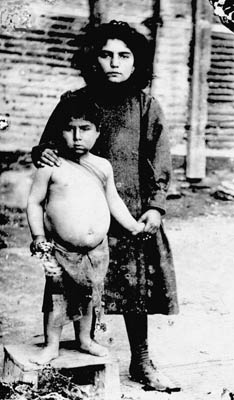
Armenian Orphans in Der-el-Zor, 1919
David Adamyan collection
Collection of the Armenian National Archive

Kharberd 1915: one of the numerous Armenian children wasted away to a skeleton
Maria Jacobsen, DIARY 1907-1919, KHARPUT, TURKEY
Tessa Hofmann & Gerayer Koutcharian
Armenian Review, Spring/Summer, 1992, Vol. 45, No. 1-2/177-178, p. 121, Fig. 58

Mousheghik, from the village of Dizi of Van province, showing the holes in his hands after he was crucified, 1915
Collection of the Armenian National Archive

Armenian orphans collected in the desert of Der-Zor (in the center is David Adamyan), 1919
Collection of the Armenian National Archive

Turkified Amenian orphans in Aintoura orphanage (seated in the centre is Halide Edip), 1917
"The memoirs of Naim bey" by Aram Andonian, 1920, p. 9

Djemal Pasha reviewing turkified Armenian orphans at Damascus, 1917
"The memoirs of Naim bey" by Aram Andonian, 1964, p. 24

Turkified Armenian orphans in the Turkish orphanage of Aintoura
Collection of Misak Keleshian

Armenian orphans at Alexandropol: They receive one-half pound of bread and a lump of sugar per day
Collection of National Geographic magazine, Volume XXXVI, Number Five, November 1919, p. 409

In 1922-1923 Near East Relief evacuated 22.000 children from orphanages in interior Turkey to Syria and Greece
This picture shows part of the 5.000 children from Kharput en route on donkey back and foot.
"Story of Near East Relief" by James L. Barton, New York, 1930, p. 152

The faring of about 8000 Christian orphans from Turkey by Jacob Kunzler, 1922
“In the land of blood and tears. Experiences in Mesopotamia during the World war (1914-1918)”
by Jakob Kunzler, 1999, p. 126 (German edition)

A single day’s rescue at Erivan, photo by Melville Chater
Collection of National Geographic magazine, Volume XXXVI, Number Five, November 1919, p. 408

Children waiting in the snow for admission into the 'Orphan City', a daily spectacle from the early morning until late at night
"Story of Near East Relief" by James L. Barton, New York, 1930, p. 124
Collection of Near East Relief Society
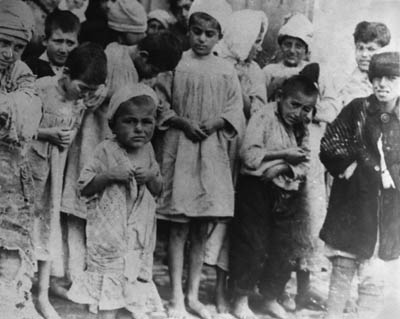
Armenian orphans
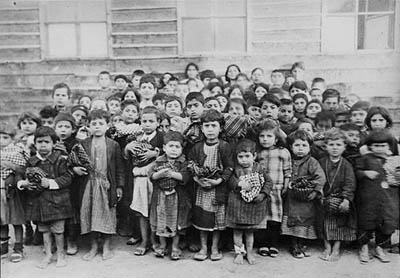
Armenian children collected from Arabs
Collection of Karen Jeppe

Armenian children collected from Kurds and Turks
Collection of Karen Jeppe

Clamoring for admittance: Armenian orphans at the Gyumri orphanage gates
Collection of Near East Relief Society
Tessa Hofmann & Gerayer Koutcharian
Armenian Review, Spring/Summer, 1992, Vol. 45, No. 1-2/177-178, p. 144, Fig. 81

Armenian children returnees to Adana, 1918
In 1920 many of them will be killed and twice deported
Collection of the Armenian National Archive

Group of Near East Relief orphan girls at summer camp. Below: Alexandropol: "Hands up", Polygon orphanage massed drill, October, 1925
"Story of Near East Relief" by James L. Barton, New York, 1930, p. 21

“One of the classes in the day-school in Mush with their teacher Margarid… The teacher Margarid Nalbanchian and most of the 120 children of the day-school were murdered in 1915”. The quoted text was written by Bodil Biorn in verso of the photo.
They all were murdered in 1915
Norwegian State archive
Photo sources: Nubarian library, AGMI archive, Russian ethnographic museum, St. Lazar Mkhitarian Congregation, Armenian National Archive, Near East Relief Society,Collection of Misak Keleshyan, Norwegian State archive
|
|
DONATE |
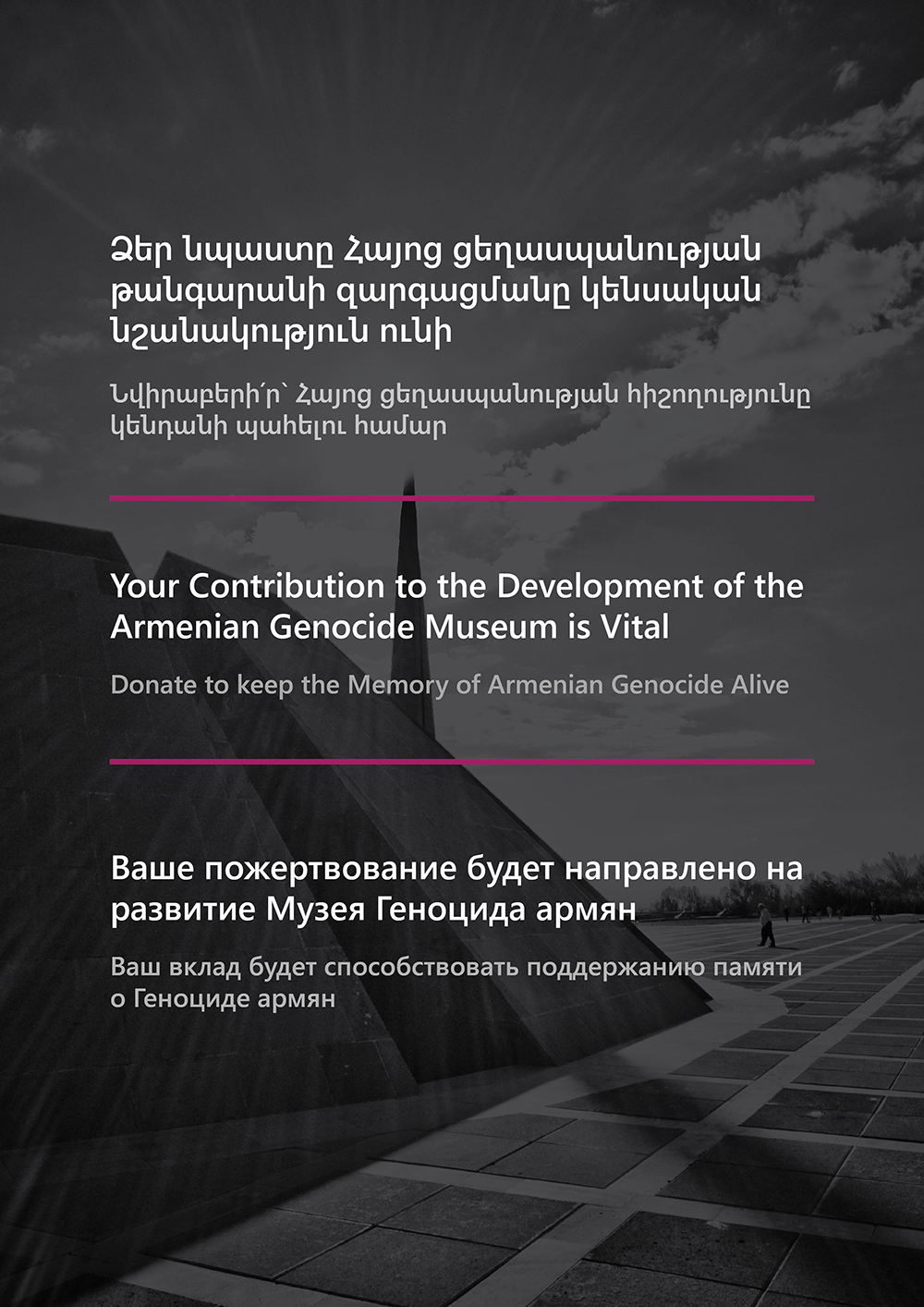
TO KEEP THE MEMORY OF THE ARMENIAN GENOCIDE ALIVE
Special Projects Implemented by the Armenian Genocide Museum-Institute Foundation
|
COPYRIGHT |

|
AGMI BOOKSTORE |
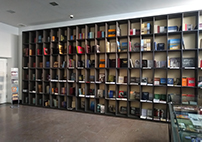
The Armenian Genocide Museum-Institute’s “World of Books”
|
TESTIMONIAL OF ARMENIAN GENOCIDE SURVIVORS |

THE AGMI COLLECTION OF UNPUBLISHED MEMOIRS
|
ONLINE EXHIBITION |

SELF-DEFENSE IN CILICIA DURING THE ARMENIAN GENOCIDE
DEDICATED TO THE CENTENNIAL OF THE SELF-DEFENSE BATTLES OF MARASH, HADJIN, AINTAB
|
LEMKIN SCHOLARSHIP |
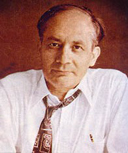
AGMI ANNOUNCES 2024
LEMKIN SCHOLARSHIP FOR FOREIGN STUDENTS
|
TRANSFER YOUR MEMORY |
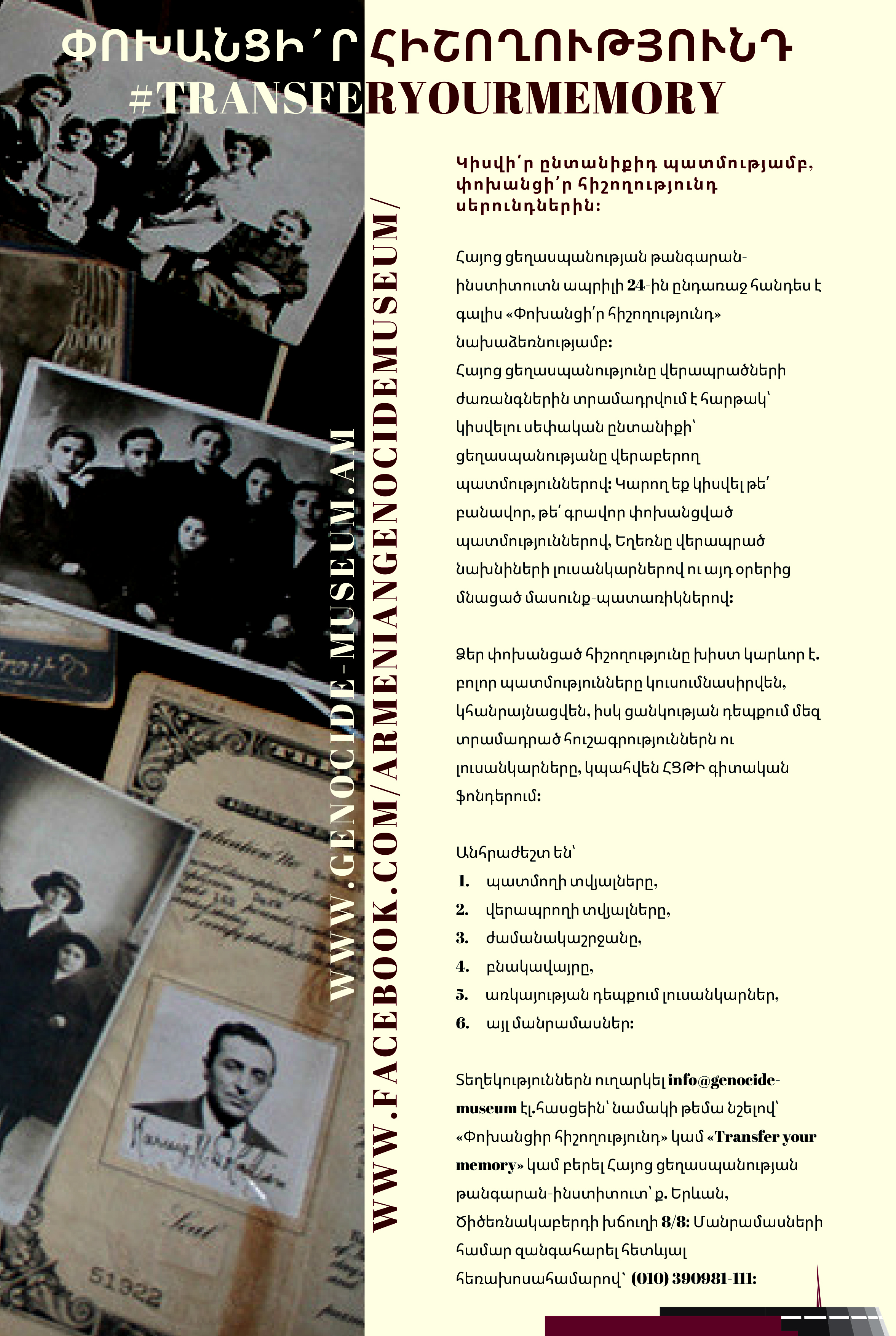
Share your family story,
Transfer your memory to generations.
On the eve of April 24, the Armenian Genocide Museum-Institute undertakes an initiative “transfer your memory”.
|
|





